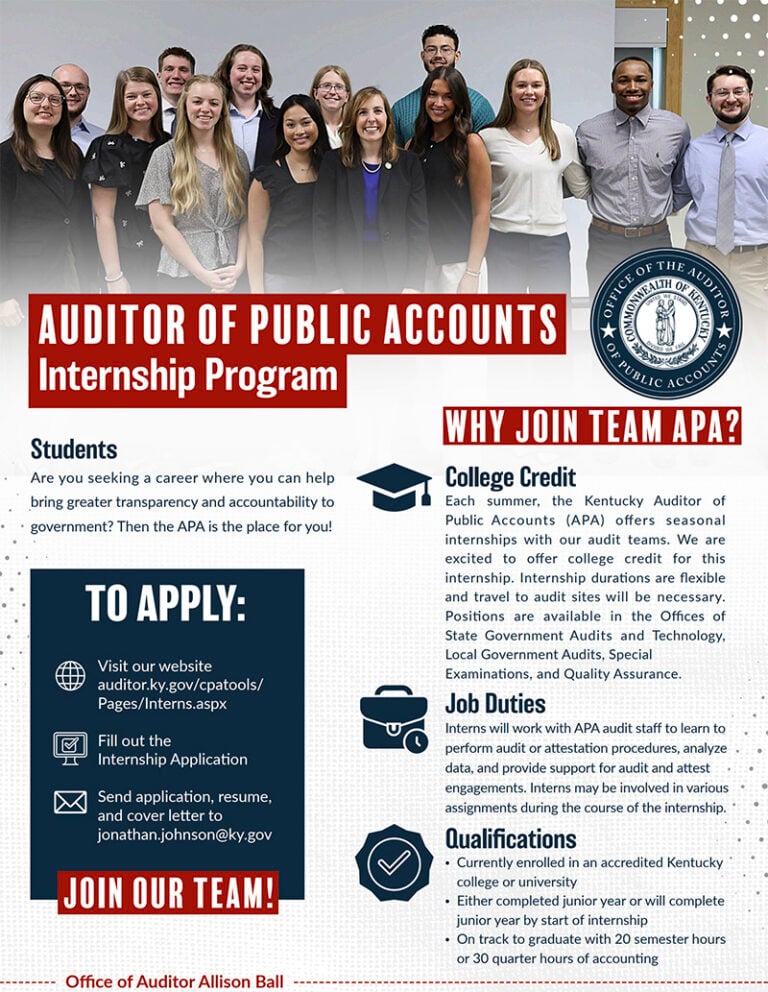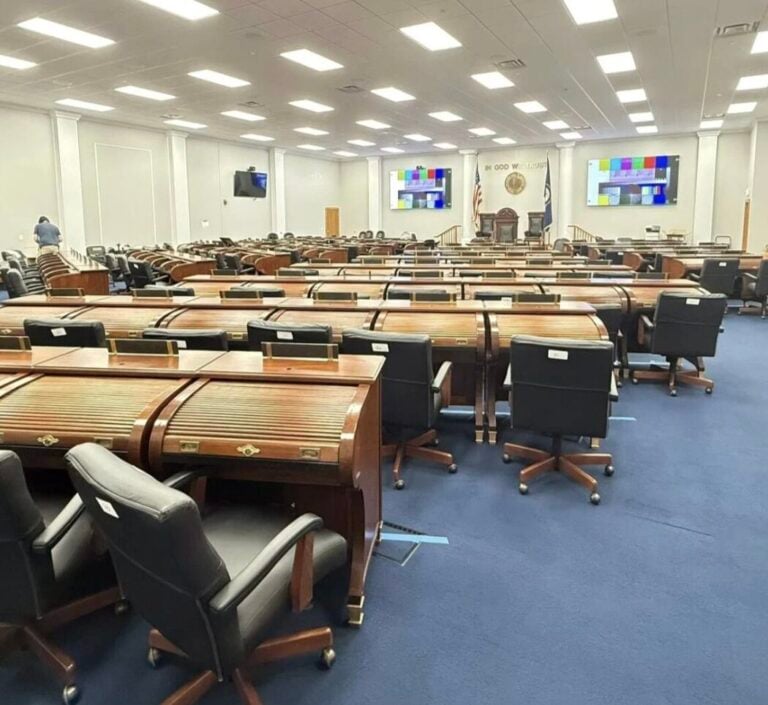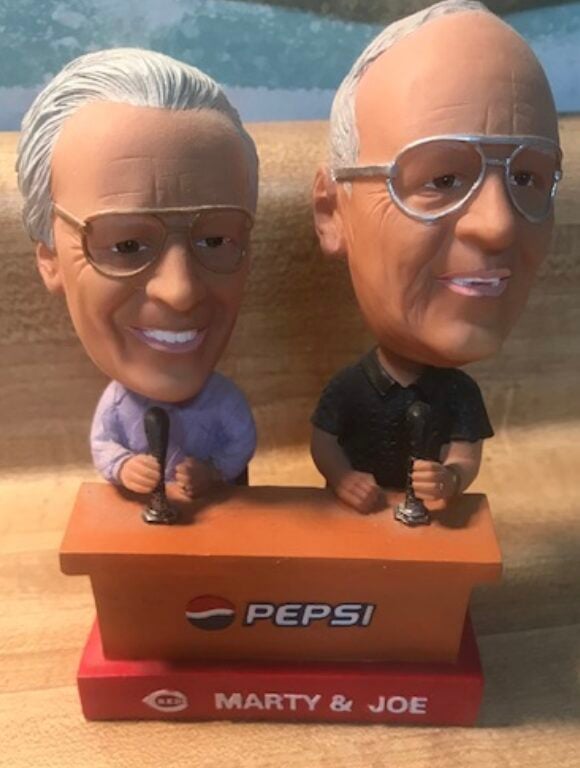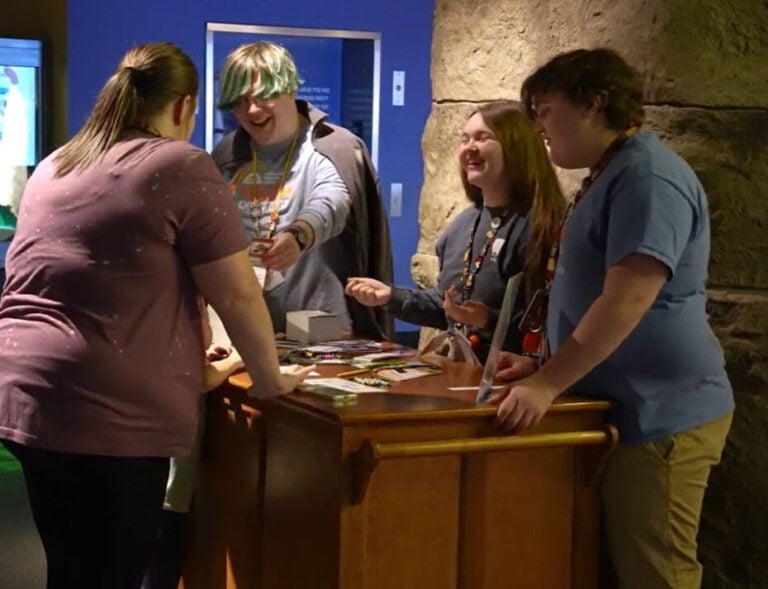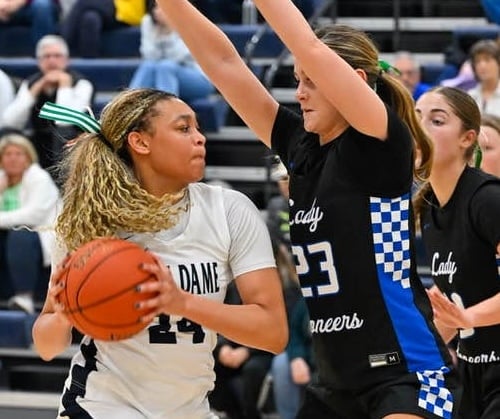By Berry Craig
NKyTribune columnist
The Hamlin home in Harlan was joyless seventy-five Christmases ago.
On Dec. 16, 1941, Green and Molly Hamlin got the telegram parents most fear in wartime.
“The Navy Department deeply regrets to inform you that your son, James Thomas Hamlin, fireman first class, U.S. Navy, was lost in action in the performance of his duty and in the service of his country…,” the dreaded wire read.
The eastern Kentuckian was among 2,400 Americans listed as killed on Dec. 7 in the Japanese air raid on Pearl Harbor, Hawaii.
The grieving couple attended a memorial service for their 28-year-old son at Harlan Baptist Church, where the family worshipped. Jimmy Hamlin’s obituary ran in the Harlan Enterprise, where he had been a cub sports reporter.
The mourning was premature. Hamlin survived the attack that plunged America into World War II. He lived through the rest of the war and didn’t die until 1999.
Hamlin was a sailor aboard the battleship U.S.S. California, one of 19 U.S. warships sunk or damaged by Japanese warplanes launched from four aircraft carriers. Enemy pilots also destroyed or damaged close to 350 aircraft.

After the war, Hamlin settled in Lone Oak, his wife’s western Kentucky hometown. He framed the telegram that reported his death and another one the Navy sent saying the first cable was a mistake.
“How many people do you know who can say they’ve read their own obituary?” he asked.
December 7, 1941, a Sunday, began promisingly enough for Hamlin, whose big ship was nicknamed “the Prune Barge” for the seemingly endless supply of that dried fruit the crew received from the state of California.
Like December 6, it was another duty-free day for Hamlin, “liberty” in Navy lingo. He was looking forward to swimming and sunbathing with some of his shipmates at Waikiki Beach, which he had visited the day before.
He also had stopped by the Honolulu Montgomery-Ward store and bought a $9.95 radio for his steady girl back in Lone Oak, a Paducah suburb. The clerk promised the sailor the radio would be shipped promptly to Almyra Craig, whom he had met in in 1937. They were married in 1943, while he was home on leave.
After pulling on his uniform of white shorts, socks, shoes and jumper, Hamlin went to breakfast. After chow, he headed topside and bought a copy of the Honolulu Advertiser from “Sweatshirt” Clark, the California’s unofficial “paperboy” when the battlewagon was in port.
Hamlin found a shady spot forward under a big canvas awning that had been spread for church services below the ship’s number one fourteen-inch gun turret. The breeze made it hard for Hamlin to turn the pages of his paper, so he went below.
At 7:55 a.m., the ship’s air raid alarm sounded. “I thought it was a heck of a time to have an air raid drill,” he said. “But it didn’t take me long to realize it wasn’t a drill.”
Japanese aerial torpedoes blasted gaping holes in the California, flagship of the Pacific dreadnought fleet. “The torpedoes shook the ship,” Hamlin said. “Dust started falling off overhead, and we thought we were being gassed.”
Hamilton and a half dozen men near him scrambled for gas masks. A chief petty officer said it wasn’t a gas attack, stopped them and ordered Hamlin to Number Three Fire Room to help get the ship underway.
Minutes later, a bomb crashed into the California and exploded where the masks were stored. “I don’t know whether or not those men were killed, but I never saw them again,” Hamlin said.
By the time he joined other sailors in the fire room, bombs and torpedoes had crippled the warship. The California was going nowhere, except to the shallow bottom of Pearl Harbor.
When the abandon ship order was passed, Hamlin found his escape route blocked by fire and debris.
While he sought another way out, he saw a sailor slumped against a bulkhead. He recognized the man as one of the clerks in the California’s “geedunk” stand, where cigarettes, ice cream and candy were sold.
“We laid him on a couch in the ward room,” Hamlin said. “We found out later he was dead.”
When Hamlin reached the main deck, he caught a glimpse of what he thought “was the biggest submarine I’d ever seen.” It was the U.S.S. Oklahoma’s 583-foot hull. Torpedoes had plowed into the warship, causing it to capsize. More than 415 of her crew perished.
Before he leaped into the water, Hamlin spotted musical instruments scattered over the California’s teakwood deck.
“One of the men in the band later told me they had just started to play the National Anthem when the Japanese planes started coming in. He said they never played faster in their lives and finished.”
Hamlin swam for a nearby lifeboat, arriving just as a Japanese plane strafed it. “That boat was just too slow for me,” he said. “I swam the rest of the way to Ford Island.”
Hamlin found refuge in an airplane hangar that was jammed with sailors, soldiers, Marines and airmen. “It seemed to dawn on everybody at the same time that this was a fine target and we all scattered,” he said.
He spent the rest of the attack in a nearby ditch.
After the Japanese planes flew back to their carriers, Hamlin and other sailors returned to the California to fight fires and try to keep her afloat. It was to no avail; the ship sank, her main deck and superstructure still above water.
Hamlin said they worked almost until midnight salvaging equipment and gear off the stricken battlewagon. Bone-tired, he narrowly escaped death again when he fell off a gangway into the dark water. An officer ordered him to go ashore and get some sleep.
“He told me that wherever I went to go whistling or singing because they were shooting anything that moved,” Hamlin said. “I don’t remember what I sang but I remember I said, ‘Please don’t shoot me’ at the end of every verse.”
Hamlin bedded down in the balcony of Ford Island Theater. Not until morning did he notice that his white uniform had been ruined. Japanese torpedoes ripped open the California’s fuel oil bunkers. Hamlin swam through the oil slick to Ford Island.
He rummaged through a big pile of clothes collected from all over and made himself a new uniform. It was not exactly regulation: Navy chambray work shirt and khaki trousers, a brown Marine shoe and a black Navy shoe.
He was wearing that unlikely getup when he joined the crew of the U.S.S. Chicago, a heavy cruiser that steamed into Pearl Harbor after the attack, then left to hunt the Japanese fleet. Because he was absent, Navy authorities at Pearl Harbor thought he had gone down with the California.
He was on the Chicago in the battles of the Coral Sea and Guadalcanal in 1942. He emerged unhurt again when an enemy torpedo smashed the cruiser’s bow off Savo Island, near Guadalcanal, on August 9. Hamlin escaped death once more when Japanese warplanes sank the Chicago on January 29-30, 1943.
He was serving on the U.S.S. LaSalle, a transport ship, when it landed Marines at the battle of Tarawa in November, 1943. “I remember singing ‘I’ll be home for Christmas when we put them ashore…,” Hamlin said. “A lot of them didn’t make it, though.”
In June, 1944, the LaSalle landed troops at Saipan. The California, refloated and repaired, helped bombard the Japanese strongpoints.
It was the first time since he had seen his old ship since the Pearl Harbor attack. “Go get ‘em Prune Barge!” Hamlin hollered through his tears.
After earning five battle stars in the Asiatic-Pacific Theater, he was shipped stateside in 1944. He was a master-at-arms at Navy Shore Patrol headquarters in Chicago when the war in the Pacific ended on September 2, 1945.
Hamlin left the Navy in 1946. Death parted him and Almyra in 1997. They rest for eternity next to each other in Paducah’s Mount Kenton Cemetery, where Vice President Alben Barkley is buried.
Hamlin said he did not hold a grudge against the Japanese though they sank two ships from under him. “They were just following orders like we were,” he said. “I don’t hate them, and I hope they don’t hate me either.”
Berry Craig of Mayfield is a professor emeritus of history from West Kentucky Community and Technical College in Paducah and the author of six books on Kentucky history, including True Tales of Old-Time Kentucky Politics: Bombast, Bourbon and Burgoo, Kentucky Confederates: Secession, Civil War, and the Jackson Purchase, and, with Dieter Ullrich, Unconditional Unionist: The Hazardous Life of Lucian Anderson, Kentucky Congressman. Reach him at bcraig8960@gmail.com








